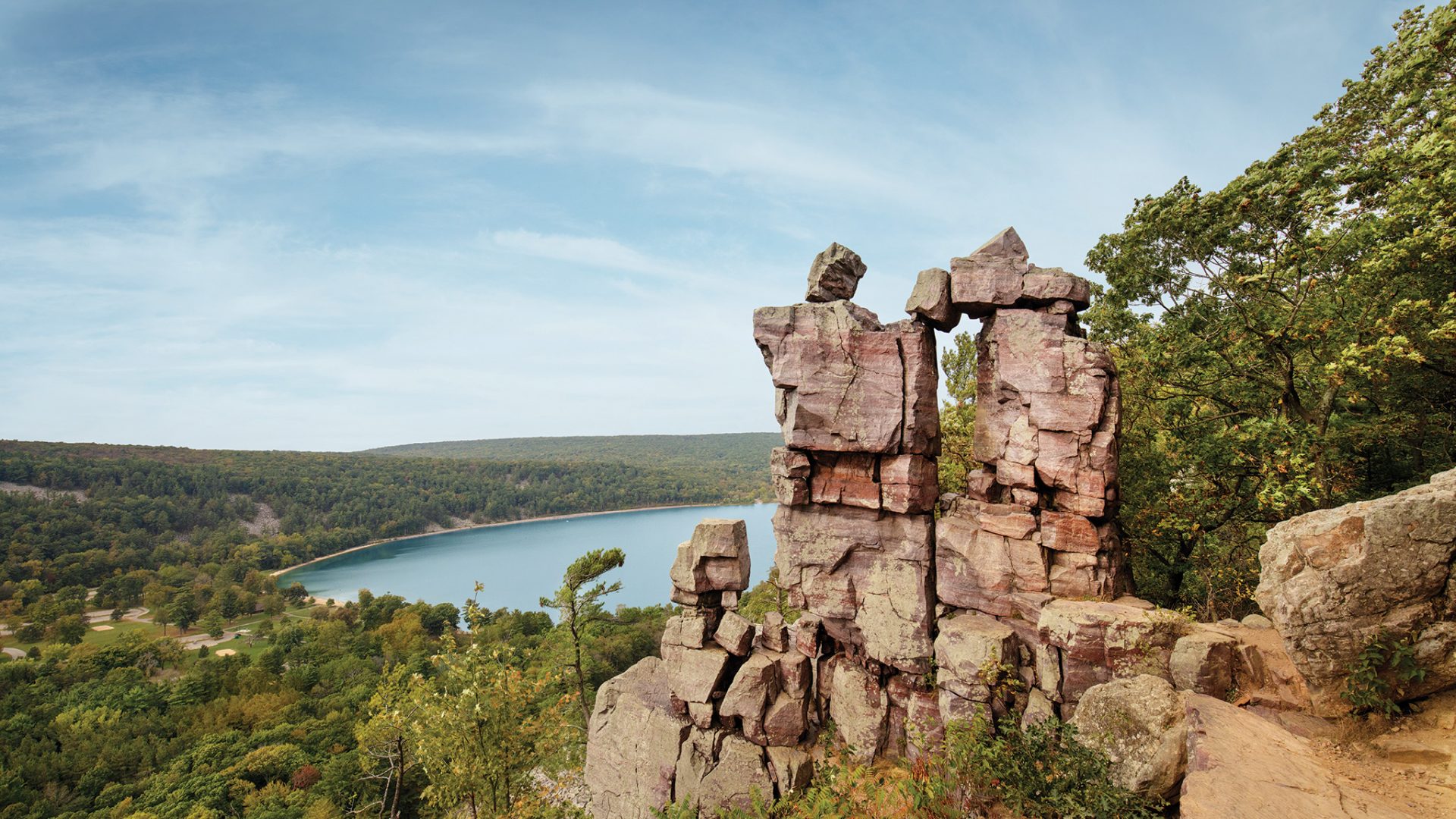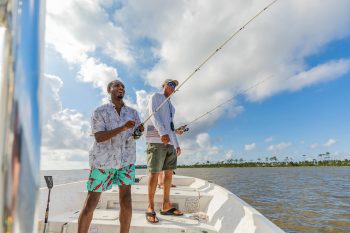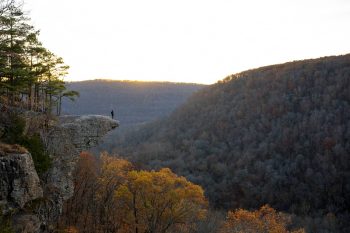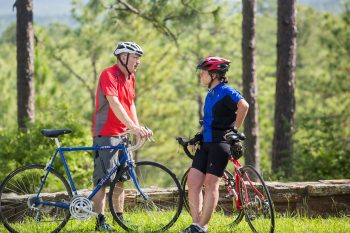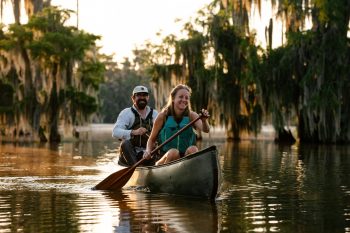Whether you’re interested in geological history, scenic trails or just a great spot for your next selfie, you’ll find it at Devil’s Lake State Park, one of Wisconsin’s favorite outdoor getaway destinations.
Devil’s Lake, located near Baraboo in south-central Wisconsin, is the state’s largest and most visited state park. The park opened in 1911, making it Wisconsin’s third-oldest state park, and Devil’s Lake still draws more than a million visitors every year.
Here are just a few things that make this area special.
Rich geological history
When we say this park is as old as the hills, you can take that literally. The towering 500-foot (150m) bluffs surrounding Devil’s Lake—part of the ancient Baraboo Range—are estimated at 1.6 billion years old. Magnificent geological formations, including Devil’s Doorway and Balanced Rock, were created by water freezing and expanding in cracks in the rock.
Though today they’re harder than granite, these pink quartzite outcrops actually started out as sand deposited into shallow ancient seas. Having been buried by surging water and sediment and surviving the Ice Age glaciers, the Baraboo Hills are a National Natural Landmark and one of fewer than a hundred Last Great Places in the world named by the Nature Conservancy.
Visit the nature center at Devil’s Lake to learn the entire incredible story of how this geological gem came to be.
Hiking, biking, rock climbing & more
If it’s outdoors on land or water, you can probably do it at Devil’s Lake. You’ll find nearly 30 miles (50km) of hiking trails, including the adjoining Ice Age National Scenic Trail and along with paved and off-road bike trails. You can even rock climb the bluffs with a permit.
The 360-acre (145 hectare) Devil’s Lake offers two boat landings, two swimming beaches, great fishing, and canoe and kayak rentals, and is popular for scuba diving for its clear water and 45- to 50-foot (13-15m) depths.
Stay for the day with abundant picnicking areas and five shelters available for rent, or set up for the night at one of three campgrounds. Parties of up to 20 people can choose from nine group campsites.
After opening specified areas of the 9,217-acre (3,730 hectares) park for hunting season, Devil’s Lake keeps the fun going all winter with cross-country skiing, snowshoeing and even dogsledding on the trails, as well as a popular sledding hill and ice fishing equipment checkouts.
Discover Native American history
Native Americans, particularly the Ho-Chunk but also Sauk, Fox, Kickapoo and possibly other tribes, were the first people to inhabit the area around Devil’s Lake after the glaciers receded 15,000 years ago. The lake got its name from a poor translation by trappers and traders of the original Ho-Chunk name, “Ta-wa-cun-chuk-dah,” which roughly translates to “Spirit Lake,” “Holy Lake” or “Sacred Lake.”
The lake’s over-the-top name, sensational tales of monsters in the water and a tragic love story between a Native American princess and French trader have entertained tourists flocking to the area since the mid-1800s, but the Ho-Chunk people believed the lake was the site of a mighty ancient battle between the thunderbirds and the water spirits that shook the earth and formed the magnificent surrounding bluffs.
At one time, countless Native American effigy mounds were scattered throughout the area that is now Sauk County. Devil’s Lake State Park preserves the largest remaining group of these mounds, which include bear, lynx and bird shapes and linear and conical designs.
Sauk County remains a region of incredible natural beauty today, with 24 state natural areas—more than any other county. In addition to nearly half of Wisconsin’s bird species and 880 types of plants, you’ll find three of these state natural areas within Devil’s Lake State Park, including Wisconsin’s oldest, Parfrey’s Glen.
Extend your visit a little longer and see more of Sauk County’s scenic natural wonders.
A version of this article originally appeared on TravelWisconsin.com.
